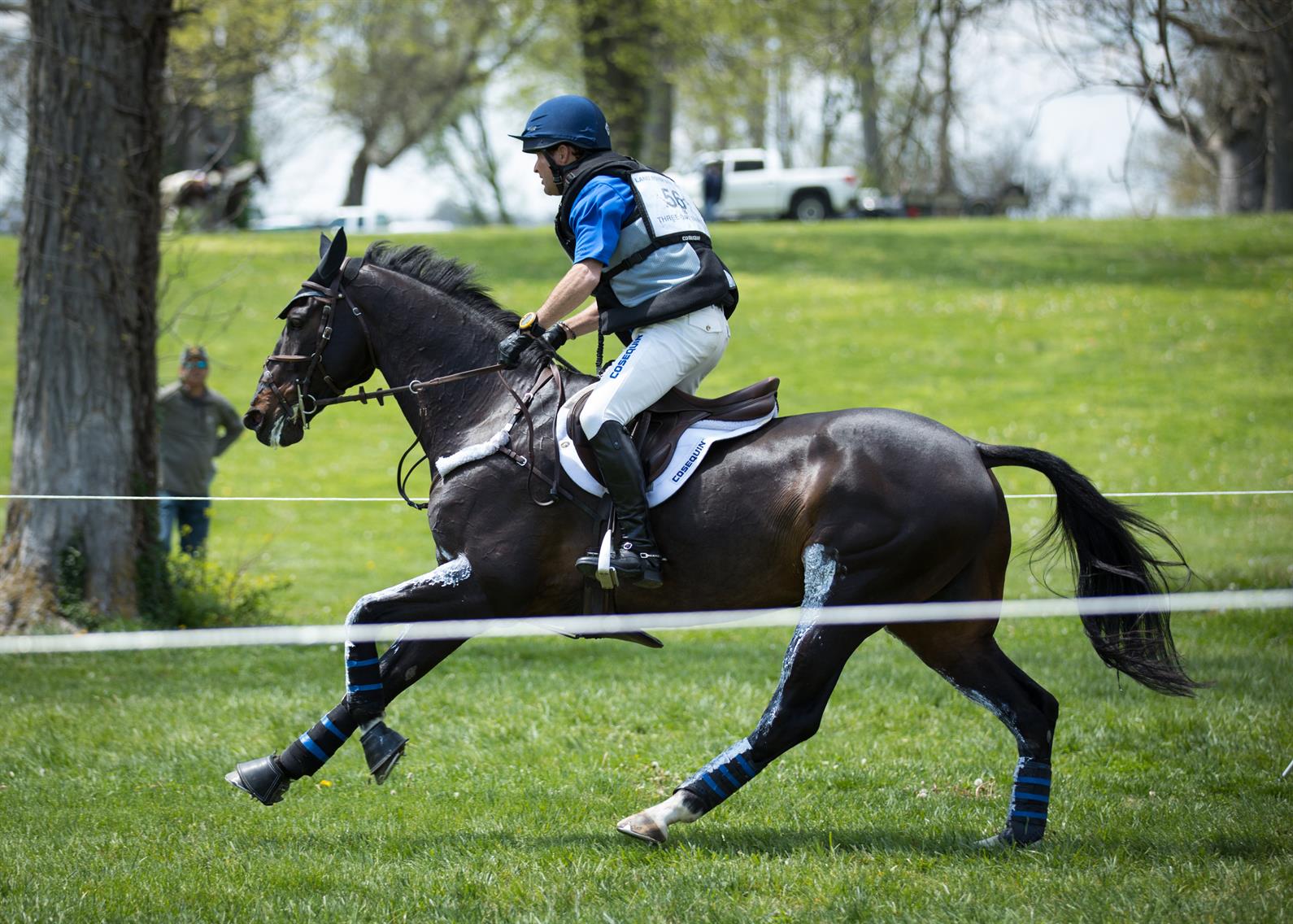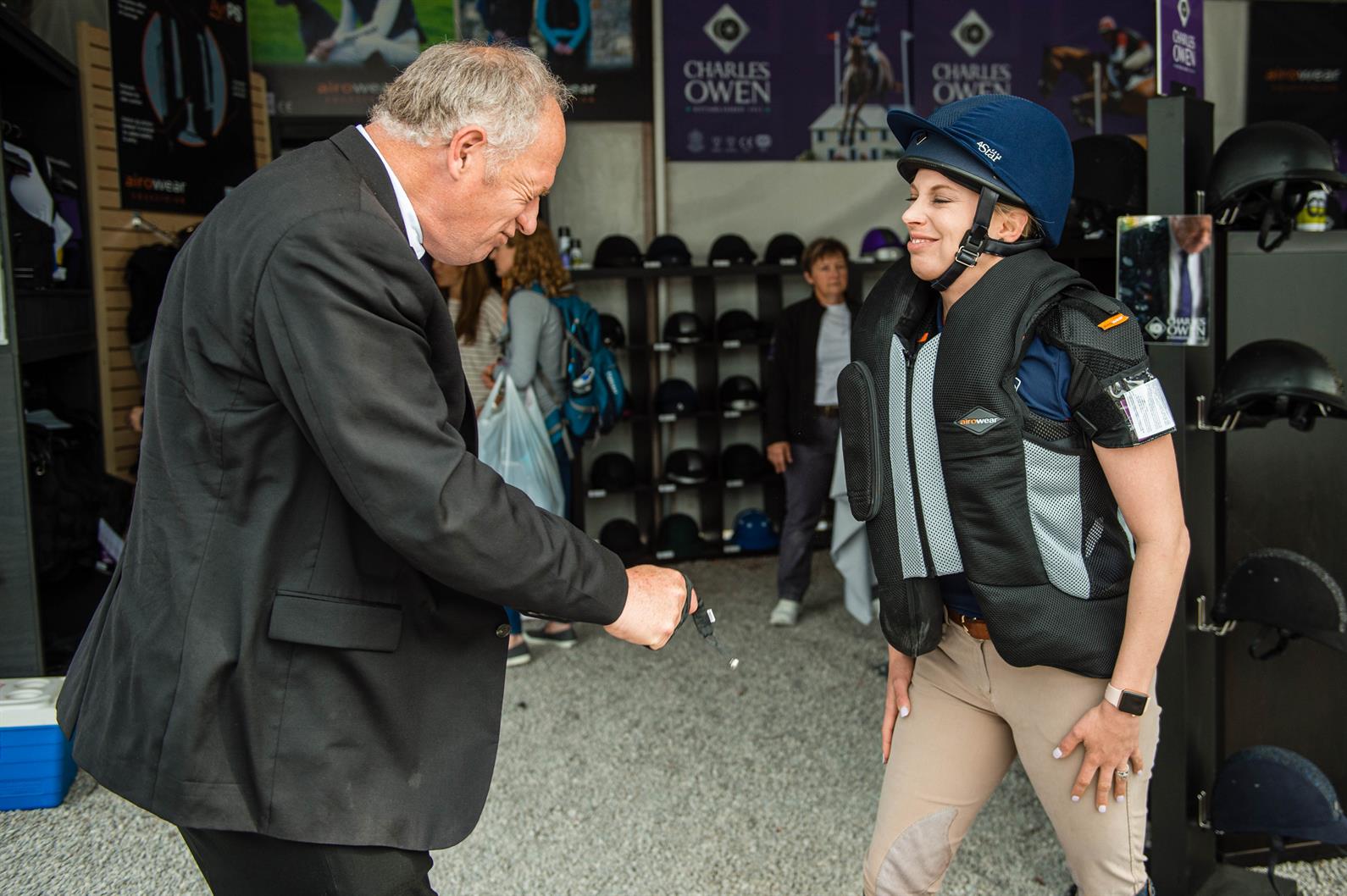While most equestrians are well aware of the potential for head injuries that comes with riding, riders run the risk of other types of injuries when involved in a fall. Eventers have been wearing body protectors on the cross-country course for decades to mitigate some of that risk, and in recent years, self-inflating air vests have become a common item of supplemental safety gear.

Riders in other disciplines have taken note, and air vests are starting to show up in the show ring as well as on the cross-country course. Like all safety gear, air vests are only effective when used correctly and cared for properly. We spoke with Danielle Santos, Director of Sales and Partnerships for Charles Owen, and Dr. Mark Hart, USEF’s Team Physician and Chair of the Fédération Équestre Internationale Medical Committee, to find out what equestrians need to know about air vests.
How They Work
There are several manufacturers offering equestrian air vests today, and while the designs vary somewhat, the principle of how they work is the same. The vests have a lanyard that attaches to the saddle. When a rider parts ways with the saddle, the lanyard triggers the activation device, which punctures an air canister, instantly inflating the vest before the rider hits the ground.
“Airowear air vests (AyrPS) have unique circulation systems that allow them to inflate when the rider detaches from the saddle and activates the gas canister,” says Santos. The inflated areas are designed to add a greater stopping distance for the rider’s body in a fall. “This protection zone includes chambers around the jaw to stabilize the head and neck, a protective tent around the thorax and torso, and a trampoline effect across the chest to protect the sternum and ribs.”
The Difference Between Air Vests and Traditional Body Protectors
Body protectors are made of a lightweight foam that helps dissipate the impact in a fall.
“Body protectors have been shown by research to reduce penetrating injuries to the torso and reduce the frequency of rib fractures,” says Hart, adding that the effectiveness is seen mostly in cross-country riding and less so in stadium jumping or on the flat. “Air vests were specifically designed with the thought to reduce ‘crush’ injuries to the chest when riders hit the ground hard or when a horse lands on top of them during a fall.”
“Traditional body protectors are designed to protect the abdomen, internal organs, chest, and ribs,” says Santos, adding that they also offer some protection from bruising, cuts, and abrasions. “What body protectors do not do is to offer direct spinal protection, protect from crushing the body, or protect against injuries involving severe torsion, flexion, or extension.”
Currently, traditional body protectors are required for eventers during the cross-country phase, and they are allowed—but not required—in most other disciplines. There is no requirement for air vests in any discipline, and even if riders opt to use them for cross-country, they must still wear a traditional body protector underneath the air vest. In other words, an air vest is not meant to be a replacement for a body protector.
“Air jackets can be added on top of any BETA Level 3 or SEI-certified body protector, but integrated body protectors that allow you to anchor the air jacket to the body protector below will prevent the air jacket from slipping or moving around the body,” says Santos.

Photo: Amy Dragoo
Care and Keeping of Your Air Vest
To keep your air vest functioning properly for the maximum life of the product, Charles Owen recommends storing it in a dry, climate-controlled tack room, if available, or inside your house. Any dirt can be safely removed with a dry brush followed by a wipe down with a damp cloth.
“After a fall and deployment of the canister, the air vest should be thoroughly inspected for any tears or marks,” says Santos. “After a significant fall or visible mark/tear, it’s recommended that riders send their air vest in for servicing to ensure the mechanisms are working properly.”
Santos also suggests sending your vest to the manufacturer for servicing annually, after six inflations, or after a significant fall, even if there’s no visible tear in the material. The service should include an inspection and re-test of the triggering and inflation mechanism to ensure they’re still working properly.
The air canisters are replaceable, so in most cases, you’ll be able to simply replace the canister and continue to use your air vest after a fall.
Should You Wear an Air Vest?
Air vest technology is still relatively new in the equestrian world, which means we don’t yet have the same level of conclusive data about their benefits that we do for helmets or even traditional body protectors.
“The Transport Research Lab worked with British Eventing in 2015, evaluating the effectiveness of air vests by using lab models to simulate horses landing on riders and measuring compressive forces,” says Hart. “This study did show evidence of probable reduction of seriousness of crushing forces, but these studies had limitations.”
In a study conducted by the Universities of Sydney and Melbourne in Australia, researchers reviewed cross-country falls that occurred at FEI events from 2015 through 2017 and compared the rate of injury between riders who wore an air vest and riders who did not. Statistical analysis showed that riders with air vests in fact had increased odds of sustaining a serious injury. However, this study did not show that the air vests caused the injury, and other factors may be at play.
“This study raised several unanswered questions and clearly points to the need for additional research,” says Hart.
Anecdotally, many riders do attest to the safety benefits of their air vests, and we’ll continue to see them in the upper levels of eventing. For riders of any level or discipline, Santos emphasizes the importance of choosing the right one and using it correctly, in concert with a traditional body protector.
“If you are interested in the additional protection that an air jacket provides on top of a foundation body protector, look for one that has been tested to the SATRA M38:Issue 3 February 2015 air vest standard,” she says, referring to UK-based independent testing organization, SATRA Technology. “The air activation device is tested prior to being inserted into the air tube to ensure it triggers and punctures the air canister, which in turn inflates the tube when a rider falls. Each tube is inflated to ensure it does so, before dispatching to the customer.”


